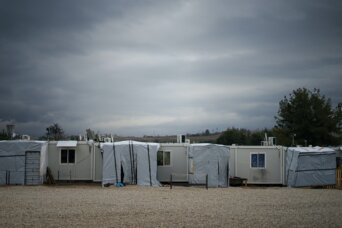- About
- Topics
- Story
- In-Depth
- Picks
- Opinion
- News
- Donate
- Signup for our newsletterOur Editors' Best Picks.Send
Read, Debate: Engage.
| topic: | Refugees and Asylum |
|---|---|
| located: | Bosnia and Herzegovina |
| editor: | Katarina Panić |
In the Bosnian Ministry of Security’s proposed security plan for the next three years, one of the top priorities is dealing with so-called ‘illegal migration’. Although human rights activists have persistently warned that there is no such thing as ‘illegal migration’, authorities continue to use this term. The draft that will be passed in the parliamentary procedure details the country’s experiences with migration, its trends and the side effects that remain the focus of this ministry.
“Bosnia and Herzegovina was supposed to be a transit country on the European migration routes, but due to the closure of most European countries, it has become a forced, temporary shelter for many migrants,” reads the state security plan 2023-2025.
On the eve of 20 June, World Refugee Day, there are about 2,500 people on the move in Bosnia. The number has decreased rapidly over the last two years. Between 2017 and 2019, when the migration crisis was at its peak, the number of refugees even exceeded 20,000, which is still much less than the average in the Balkan region, compared to the total population.
Nevertheless, the government wants to ensure the crisis won’t happen again. It intends to separate economically-driven migration from that caused by wars, believing they may negotiate with people who are not endangered by conflicts to return voluntarily to their homelands. The government even plans on arranging charter flights for them. For instance, people from Pakistan make up one-fourth of all migrants in Bosnia, so the two governments have made a readmission agreement. A similar one is expected for Maroko, Egypt, Bangladeš and Liban.
Unlike the governmental institutions, the civil society organisations, religious communities and academia emphasise humanitarian aspects in the first place, not safety issues. They advocate switching the focus from how to prevent the migrations to how to deal with them.
"The migrant crisis is something we can no longer refer to in that way. It is a constant process. It is predicted there will be more and more migrants. Estimates show that there will be ten billion people in the world in 2050, of which one billion will be migrants,” Stanko Perica from the Bosnian branch of Jesuit Refugee Service told local media.
He stressed that refugee camps could not be a long-term solution.
“We all need to practice a more humane approach.”
Photo by Julie Ricard

